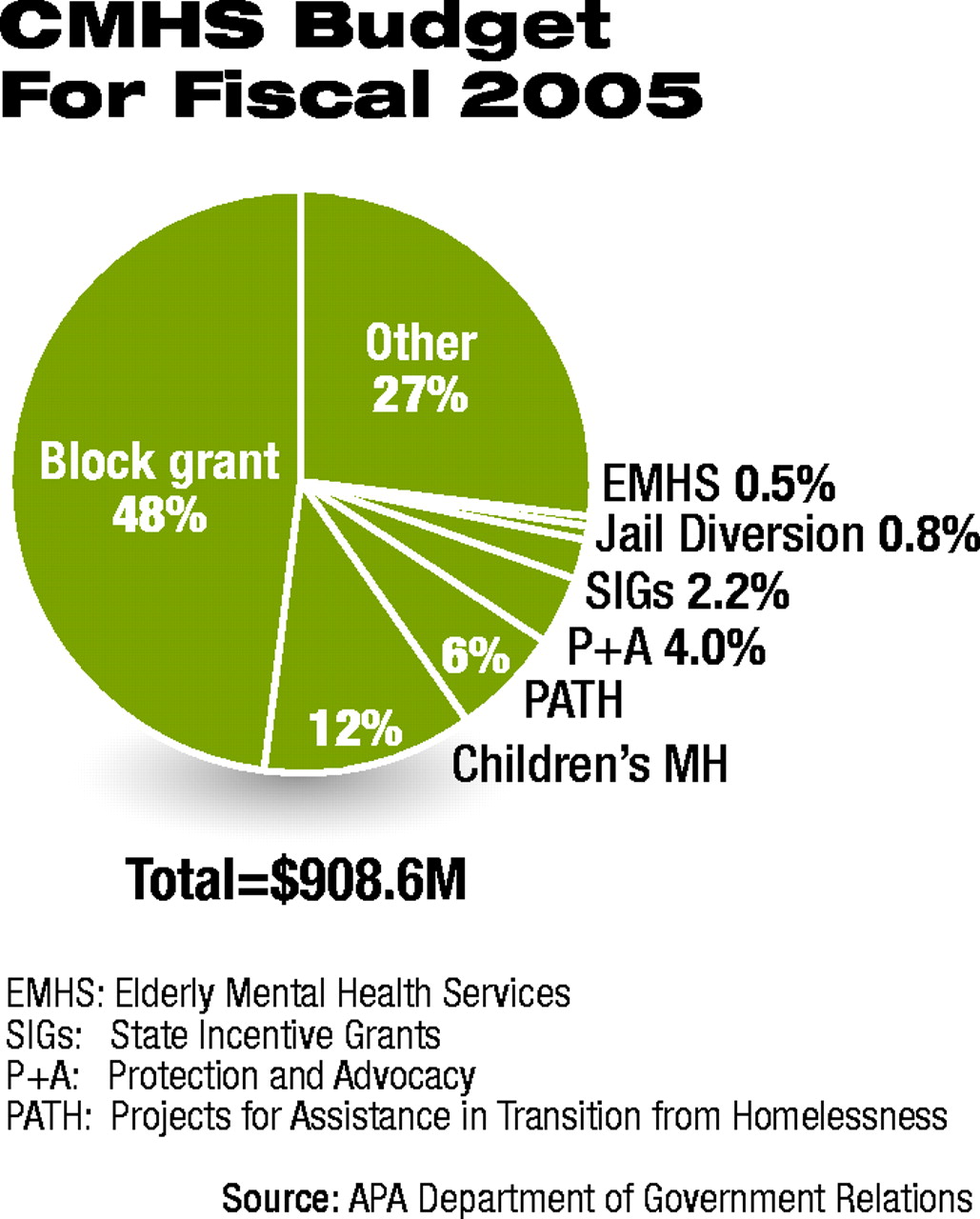Congress approved an increase of $46 million for the federal Center for Mental Health Services (CMHS) over its Fiscal 2004 budget, bringing its total budget to $908.6 million for Fiscal 2005. CMHS funds public mental health services within the Substance Abuse and Mental Health Services Administration (SAMHSA), and its budget represents about 30 percent of SAMHSA's program budget in Fiscal 2005. SAMHSA is part of the Department of Health and Human Services.
“Overall, the appropriations bill was quite favorable to CMHS, considering that many other public health programs received less than a 3 percent increase in Fiscal 2005,” Lizbet Boroughs, an associate director in APA's Department of Government Relations, told Psychiatric News.
The CMHS increase was included in the omnibus budget bill (HR 4818) that Congress passed in November and the president signed into law last month.
Of the $46 million increase in the CMHS budget, $20 million is for the new State Incentive Transformation Grants (SIGs). The grants will give states the resources to develop comprehensive service plans for adults and children with mental and emotional disorders.
They also “will enable states to create new partnerships among federal, state, and local governments to expand the array of available services and supports that mental health consumers and families need. These include housing, vocational rehabilitation, and educational services,” according to the “Appropriations Recommendations for FY 2005” by the Mental Health Liaison Group (MHLG). This group, of which APA is a member, represents advocates, consumers, family members, and service providers.
“The funding is especially welcome since it is challenging to have new programs created and funded in this lean fiscal environment,” Boroughs said.
Congress also passed an increase of $1.4 million in Fiscal 2005 for the Community Mental Health Services Performance Partnership Block Grant, bringing its total funding to $436.1 million. For Fiscal 2004, Congress had cut the block grant's funding by $2.4 million.
The block grant program, which gets half of CMHS's funding, is the principal federal discretionary program supporting community-based mental health services for adults and children. “States may use block-grant dollars to provide a range of critical services including housing services and outreach to people who are homeless, employment training, case management, and peer support,” according the MHLG report.
Other longstanding programs, including the Comprehensive Community Mental Health Services for Children and Their Families Program and the Projects for Assistance in Transition from Homelessness (PATH), received increases of about $1 million less in Fiscal 2005 than in Fiscal 2004.
The president's budget request did not include funding for jail diversion programs and a program that provides outreach to and mental health treatment for the elderly, which had received funding in previous years.
Boroughs said she and other lobbyists met several times with members of the House Appropriations Committee to educate them about the mental health needs of the elderly.
Rep. Patrick Kennedy (D-R.I.), a member of the House Appropriations Subcommittee on Labor, Health and Human Services, and Education and a staunch supporter of mental health parity, “led the fight within the Appropriations Committee to restore the funds” for the mental health program for the elderly, according to a press release from Kennedy's office.
As a result of these advocacy efforts, the House restored $5 million to the CMHS program for the elderly, the same amount the program had been given for the past three years.
Congress also restored funding for the jail diversion program at the same $7 million level the program was funded in Fiscal 2004. Although Bush signed the Mentally Ill Offender Treatment and Crime Reduction Act of 2004 into law in October 2004 (Public Law 108-414), authorizing $50 million for Fiscal 2005, the omnibus legislation contains no new funds for the bill.
The legislation, strongly supported by APA, authorizes funding for states and local communities to develop jail diversion programs and cross-train criminal justice, law enforcement, court, and mental health personnel; it also provides mental health services for ex-inmates upon re-entry into the community, according to DGR.
Details of SAMHSA's Fiscal 2005 budget and programs can be accessed online at<http://thomas.loc.gov> by searching on “HR 4818.” ▪

